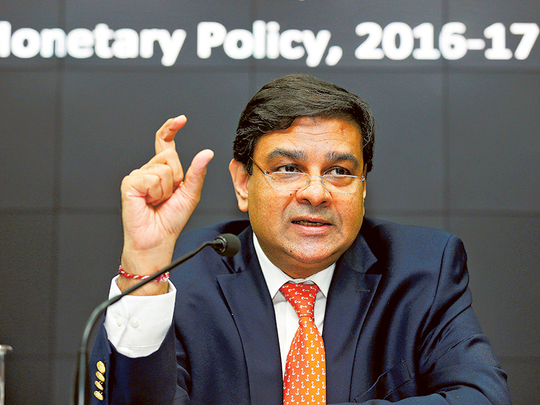
Mumbai: The Reserve Bank of India’s muted response to this week’s surge in the rupee suggests policymakers have grown more tolerant of currency gains.
While the central bank was said to have purchased dollars in each of the past three days, the intervention has been far less aggressive given the currency’s move, according to FirstRand Ltd. and RBL Bank Ltd. The reason: dollar-buying will boost rupee liquidity at a time when India’s banking system is already flooded with cash, thus threatening to stoke inflation and jeopardise RBI Governor Urjit Patel’s monetary policy.
“The RBI is possibly allowing the rupee to appreciate with the aim of controlling imported inflation,” said Paresh Nayar, Mumbai-based head of currency and money markets at the local unit of FirstRand. “Its less aggressive intervention is also guided by the fact that it wants to prevent too much money sloshing in the banking system.”
Indian banks had about 5.1 trillion rupees (Dh285 billion, $77.8 billion) in surplus funds as of Wednesday, according to the Bloomberg Intelligence India Banking Liquidity Index, close to the record 5.5 trillion on March 6. That’s after Prime Minister Narendra Modi’s shocking November decision to ban high-value currency notes saw citizens rush to banks to deposit the defunct bills.
The rupee weakened 0.2 per cent to 65.5575 per dollar on Friday, after climbing 2 per cent in the previous four days, with much of the advance coming after Modi’s Bharatiya Janata Party Saturday won a majority of seats in the key Uttar Pradesh state. The victory is seen emboldening him to undertake more economic reforms and lure foreign funds to India.
“The central bank might be wary of intervening aggressively to slow the rupee’s ascent, apart from its presence on ad hoc basis to contain volatility,” Radhika Rao, Singapore-based economist at DBS Bank Ltd., wrote in a report Thursday. “These observations are also backed by the smaller rise in foreign reserves in February and the rupee emerging as among the best performers in the region against the USD.”
Greater volatility
Deutsche Bank AG and Australia & New Zealand Banking Group Ltd are among global lenders to raise their end-2017 rupee forecasts after Modi’s win. Both now estimate the Indian currency at about 67.5 per dollar by December 31, with Deutsche upping its view from 70 earlier, while ANZ raising it from 69.5.
“The RBI has been intervening in both the directions to keep FX volatility low, but this week the central bank allowed a greater volatility in the currency, which led rupee to breach the 66 mark on the downside,” Kaushik Das, Mumbai-based senior economist at Deutsche Bank, wrote in a report dated March 16. While the rupee may gain further in the short-term, it will be difficult to sustain those levels and the currency will likely start “mean-reverting” from the next quarter, he wrote.
Consumer prices in India rose 3.65 per cent in February after easing for six consecutive months as food costs climbed. A panel led by Patel last month signalled an end to the monetary-easing cycle.
Intervention via the forwards market is one way the central bank could look to curb currency gains without having to worry about boosting banking liquidity.
Under this method, the RBI typically enters into sell-buy swaps with banks, whereby it sells the dollars bought in the spot market and simultaneously offsets the position by buying dollars in the forwards market. This pushes back the liquidity injection to a future date.
“The central bank could be using the forwards intervention strategy,” said Rohan Lasrado, head of forex trading at RBL Bank in Mumbai.
The RBI has maintained it doesn’t target a specific rupee level and intervenes only to curb undue volatility in the currency market.












